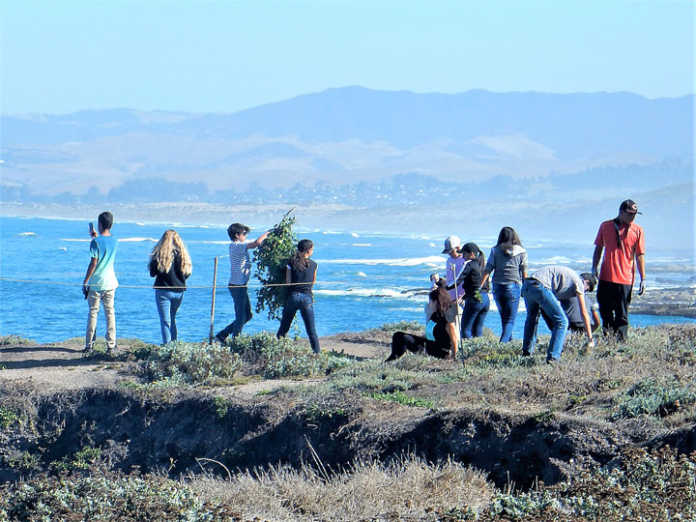Contributed Photo
SAN ARDO — Eighth-grade students from San Ardo Union School departed Sept. 25 for Montana de Oro State Park in Los Osos, where they volunteered to stop an invasive nonnative vine from dominating a unique habitat along the beautiful California coast.
The students applied a variety of resource management techniques to restore threatened habitat along the Bluff Trail, a 2.6 mile trail with spectacular views of the coastline. In recent years, an intrusive vine, the New Zealand spinach, has begun to dominate the coastal plant community and is beginning to chock out the native vegetation essential for the survival of the park’s wildlife.
According to Jodi Isaacs, environmental scientist for California State Parks, the invasive vine has overrun many localities along the California coast, but fortunately, it is only growing on 22 acres in Montana de Oro.
“With the students’ help, we look forward to taking aggressive action to eliminate the plant in Montana de Oro,” Isaacs said. “This critical action assures that the native plants will continue to thrive and provide the resources that the region’s wildlife depend on. Without the students’ help, the situation could over time lead to serious degradation of this world-class resource. Thankfully, the students are making up for the shortfall in park staff needed to tackle this ecological challenge.”
As part of the restoration process, the students also collected seeds of native plants that will be propagated in park nurseries and then out-planted in areas that have been cleared of the vine.
In addition to volunteering, the students enjoyed a tour of Hearst Castle to learn about California history, visited the largest elephant seal rockery in North America and encountered marine wildlife as they kayaked across Morro Bay.
This service learning opportunity was made possible with a grant from Chevron, which has a strong commitment to supporting STEM (Science, Technology, Engineering and Math) related school programs. The company’s partnership with Nature Corps, the event organizers, extends for over 25 years.
Their collaborative efforts have resulted in the completion of major conservation projects, including the preservation of the General Sherman giant sequoia, the largest living organism on earth, and a key element in the National Park Service logo.













